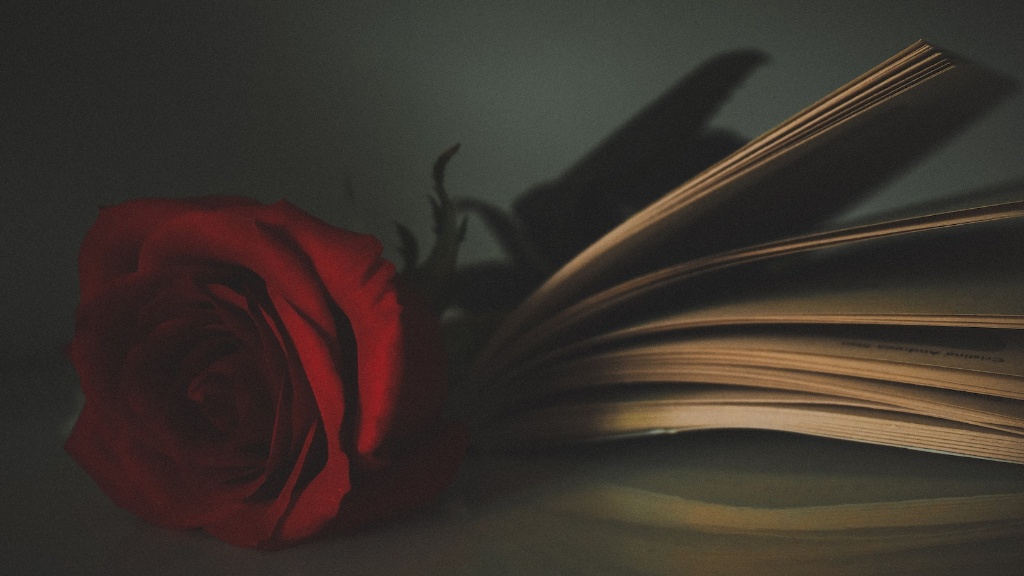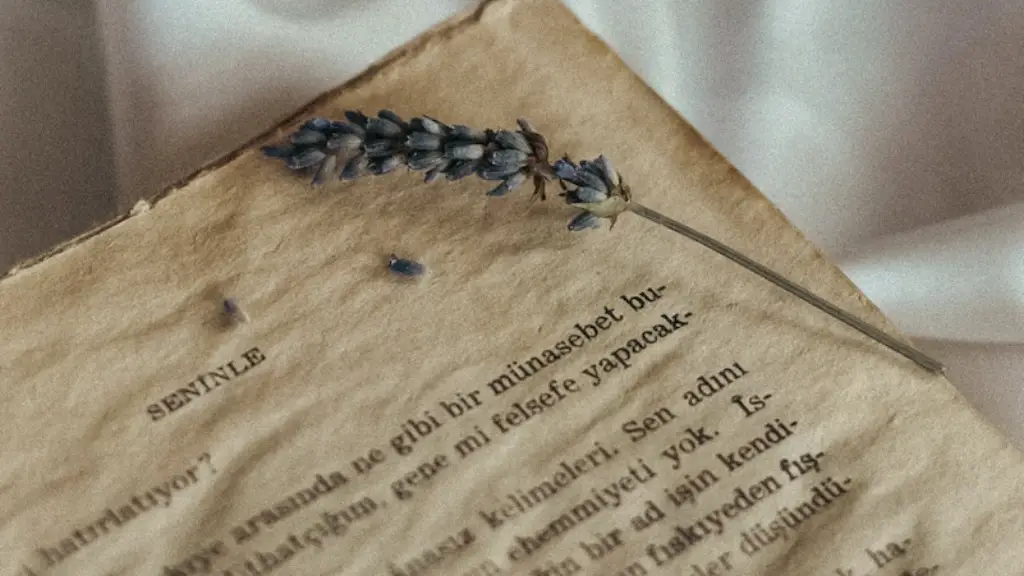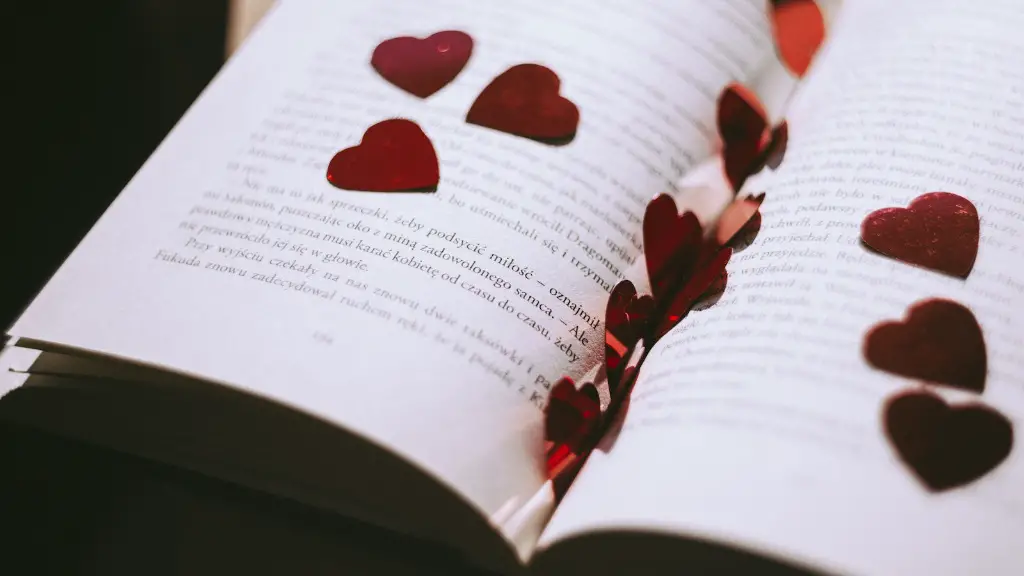Cataloging and poetry go hand-in-hand as poets often use the cataloging process to lend structure and instructions to their work. Poets use cataloging to create boundaries and draw attention to objects and events in their work. This literary structure can reveal powerful psychological and symbolic meanings. Cataloging serves many purposes, including helping to shape a poem, supplying imagery, and providing structure that can enhance the aesthetic appeal of the poem.
At its most basic level, cataloging in poetry is a list of items or a group of topics that create an order or concept within the stanzas of a poem. For example, the poet may arrange a poem by listing things in chronological order, in order of their importance or size, or alphabetically. This ordering of items or topics gives the poem a particular framework, which can help create a sense of unity and flow. As an example, poems that focus on a person’s biography or development usually arrange the topics or items chronologically in order to tell a linear story.
The poet may also use the cataloging techniques to create subtle shifts in the poem’s tone and rhythm. By utilizing rhetorical techniques such as repetition, juxtaposition and alliteration, the poet can manipulate the order of items to create a rhythm or tempo for the poem. This form of manipulation can also help to create a powerful effect on the audience, as the use of such techniques can help convey a certain mood or emotion.
Cataloging also helps to emphasize certain items. For example, if a poet decides to list certain objects within the poem for heightened emphasis, cataloging can help create a stronger visual effect. By breaking up the poem into categories, the poet can better draw attention to certain ideas or topics. Similarly, a poem that focuses on the idea of change can be written in a way so that the list of items arranged in the poem steadily transitions from past to present, in order to evoke a greater level of emotion and understanding from the audience.
Finally, cataloging can help to create a sense of suspense or anticipation within a poem. By slowly listing various items one by one, the poet can create a slow buildup of suspense or tension as the poem progresses. This is often used when the poet is trying to convey a certain mood or atmosphere. Cataloging in poetry can also lend an abstract quality to the poem, as the poet can use the list of items to draw connections between ideas or events without directly referring to them. This can make the poem more ambiguous and open to interpretation.
Cross-Classifying Catalogued Data
In addition to the traditional techniques of cataloguing such as categorising, grouping and classification, poets may use cross-classifying as a form of cataloguing. This is a form of cataloguing that uses more of a creative approach than the traditional methods. It involves the breaking down of a larger group of items into two or more specific groups of data that can then be analysed on their own. Cross-classifying can be used to add a further layer of meaning to the poem, as cross-classifying the data can help explore an idea in a deeper and more meaningful way. By adding a layer of complexity to the poem, the poet can often reveal greater depths of meaning and provide a compelling narrative to the reader.
For example, a poem about the culture of a particular region or nation may use cross-classifying to explore the different ways of life of the people living in this region. By breaking down the data into cultural practises, language, music, and recreation for example, the poet can explore the idea of the region and its people more fully. This type of narrative poem can reveal multiple perspectives, helping to create a fuller understanding of the region and its culture.
Sub-Groupings and Associations
Another form of cataloguing in poetry is the use of sub-groupings and associations. This type of cataloguing involves creating sub-groupings of items that have some sort of association. For example, a poem about the seasons could be grouped by the colour associated with each season – red for summer, green for spring, yellow for autumn and white for winter. Such categorisations can help to add a greater level of detail and subtlety to the poem, as well as give it a sense of cohesion as the poem progresses.
Poets may also use sub-groupings of items to create a sense of contrast in the poem. For example, a poem about love could be grouped according to the intensity of emotion depicted – such as light, gentle love and intense, passionate love, for example. By juxtaposing opposing ideas, the poet can create a narrative that reveals something meaningful about love and its nature. This type of cataloguing is also useful for poems that explore the passage of time and cycles of nature, as sub-groupings can help to reveal these subtle changes.
Metaphorical Categorisation
Lastly, poets may also use the technique of metaphorical categorisation when writing in a poetic style. This type of cataloguing involves associating objects or ideas with other objects or ideas that are not directly related to each other. By metaphorically categorising the data, the poet can explore a particular idea in a more abstract way. For example, a poem about happiness could be metaphorically categorised according to different types of natural phenomena such as sunshine, rain and wind. This type of cataloguing can help to add an abstract quality to the poem, allowing the poet to explore the concept of happiness in a more nuanced and creative way.
Identifying Patterns
Cataloguing in poetry can also be used to identify patterns within the poem’s structure. This can be useful for poets who want to explore a particular theme or idea, as identifying patterns can help bring this theme or idea to life. For example, a poem exploring the idea of love can be organised in a particular order or pattern so as to reveal the various aspects of love that the poet is exploring. By creating a pattern with the way the items or topics are listed, the poet can create a powerful emotional effect that draws the reader into the poem.
Similarly, cataloguing in poetry can help identify persistent themes or ideas that appear throughout the poem. By spontaneously arranging the data in various orders, the poet can better observe patterns that may appear throughout the poem. By slow uncovering such patterns, the poet can then go deeper into the ideas and uncover further layers of meaning that can enrich the reading experience.
Mnemonics
One of the most popular forms of cataloguing in poetry is the use of mnemonics. Mnemonics are words or phrases which help to remember a longer list of items or topics. By using mnemonics to list items or topics within the poem, the poet can create associations between ideas or objects which can then be used to explore a particular theme or idea in an interesting and creative way. For example, a poem about the seasons could be organised with ‘EQYW’ as the mnemonic, which stands for ‘Expect Questioning Youthful Wonder’. This helps to associate each season with a particular concept, making the poem easier to remember and more organised.
Using Musciality
Poets may also use the cataloguing techniques to create a rhythm or musicality within the poem. This can be achieved through the ordering of words or phrases, and can be used to add an element of musicality to the poem. Through the use of repetition, syllables, and alliteration, poets can craft a musical flow within the poem, often adding to the reader’s experience. Additionally, the poet can use these techniques to create a sense of suspense or anticipation within the poem, as the poem progresses the reader is attentive for the next phrase or line due to the musicality of the poem.
Symbolic and Visual Imagery
Lastly, cataloguing can also be used to create a more powerful visual and symbolic imagery within the poem. By cataloguing terms, phrases, and images that represent a particular idea or theme, the poet can create a powerful effect on the reader as they experience the poem. Additionally, the poet can use cataloguing to draw attention to certain objects, people, or events that are important to the poem’s narrative. By creating a clear organization of the listed elements within the poem, the poet can draw the reader’s attention to the important aspects of the poem.
Combined Narrative and Cataloguing Techniques
The various cataloguing techniques discussed above can be combined for powerful results. By combining narrative and cataloguing techniques, the poet can use the cataloguing to draw attention to certain elements within the poem, while also using the narrative to explore a range of ideas and emotions. Additionally, by combining narrative and cataloguing techniques, the poet can create a more vivid and nuanced portrait of the subject matter, with deeper layers of psychological, emotional, and spiritual meaning.
Conclusion
In conclusion, cataloging in poetry can be a powerful tool for the poet. By utilizing different techniques such as the grouping of items, cross-classifying, sub-groupings, mnemonics, musicality and symbolic imagery, the poet can create an organized and structured poem which is full of meaning and emotion. As cataloguing is an integral part of poetry, it is important that poets understand the different techniques they can use to create a meaningful poem. By using cataloguing skillfully, the poet can create a unique calligraphic pattern which adds to the aesthetic appeal of the poem, as well as create powerful psychological and symbolic structures within the poem.




